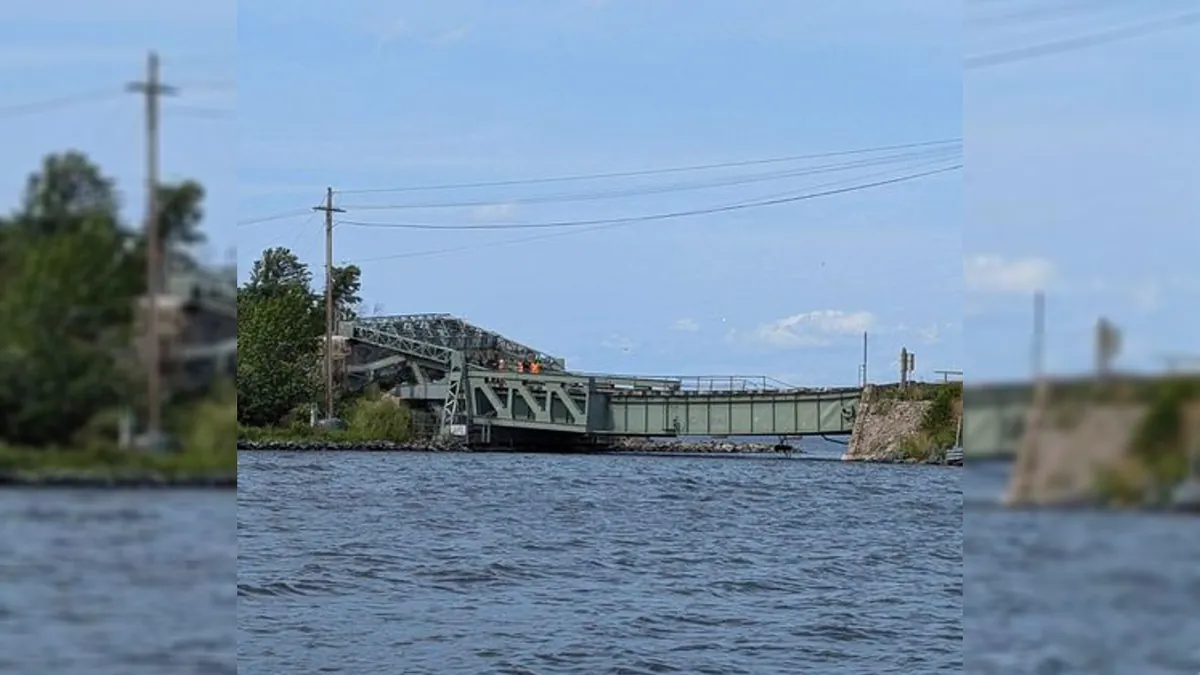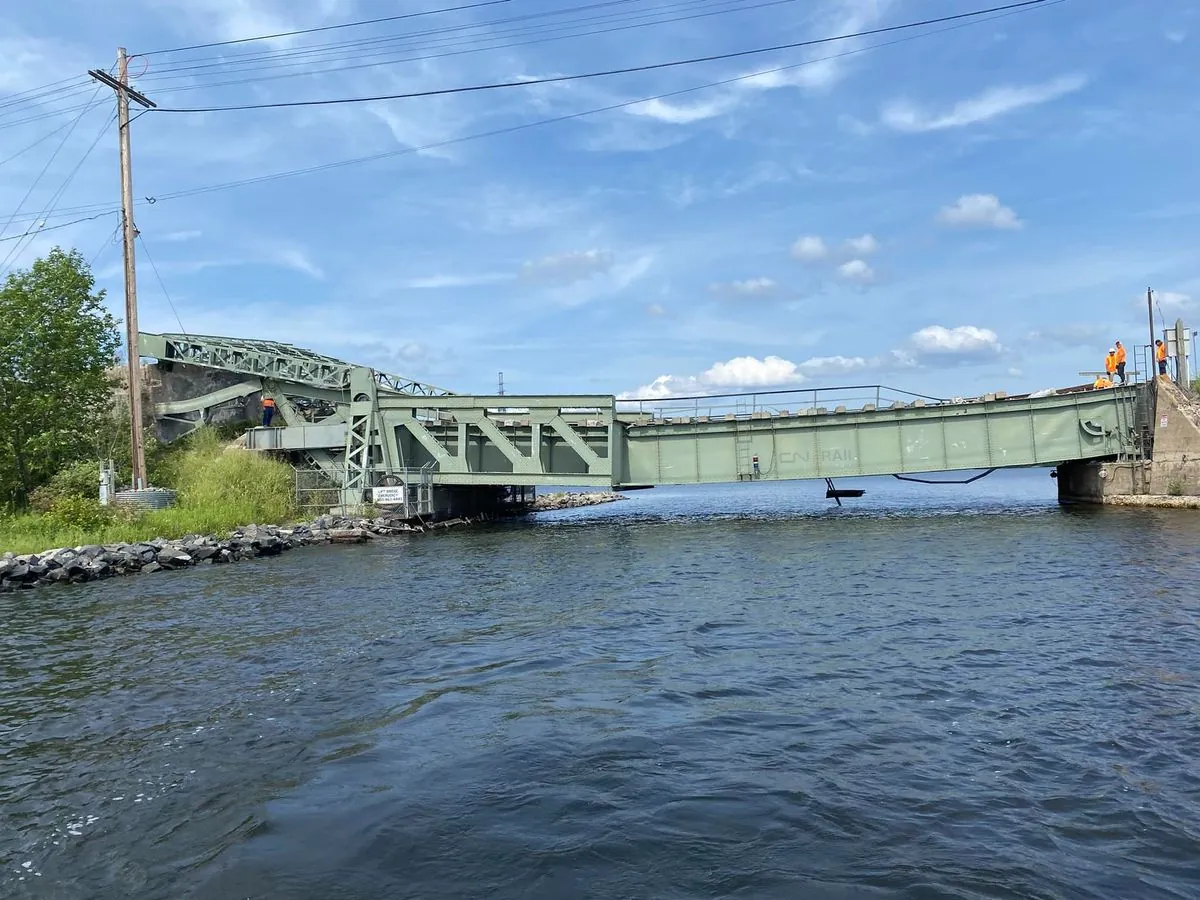Historic U.S.-Canada Border Bridge Collapses, Halting River Traffic
A 116-year-old rail lift bridge connecting Minnesota and Ontario collapsed, disrupting water traffic on the Rainy River. No injuries reported as repair efforts begin amid minor environmental concerns.

On Wednesday, August 14, 2024, a significant incident occurred at the U.S.-Canada border when a 116-year-old rail lift bridge unexpectedly collapsed. The structure, known as the Rainy River Rail Lift Bridge or the 5 Mile Bridge, connected International Falls, Minnesota, and Fort Frances, Ontario, spanning the Rainy River.
The collapse has resulted in the suspension of water traffic along this crucial international waterway. Fortunately, no trains were involved in the incident, and no injuries were reported. The cause of the collapse is currently under investigation by relevant authorities.

The Canadian National Railway reported a minor environmental concern following the collapse. A small amount of "biodegradable, non-toxic hydraulic oil" was released into the river. However, environmental teams swiftly responded, containing the spill and initiating recovery efforts to minimize any potential impact on the local ecosystem.
This incident highlights the significance of the Rainy River region, which has a rich history dating back to the fur trading era. The area is part of a larger watershed covering approximately 14,900 square miles and is known for its paper and pulp industry. The collapsed bridge played a crucial role in cross-border trade and transportation, forming an important link in the transcontinental rail network.
The Rainy River, approximately 137 km (85 mi) long, forms part of the Canada–United States border. It connects Lake of the Woods, the sixth largest freshwater lake in the United States, to Rainy Lake, which boasts a surface area of 932 km² (360 sq mi). This region is renowned for its natural beauty and is a popular destination for recreational activities such as fishing and boating.
International Falls, often referred to as the "Icebox of the Nation" due to its cold climate, and Fort Frances, named after Lady Frances Simpson, wife of Sir George Simpson, are considered twin cities. These communities, along with the surrounding area, experience significant seasonal temperature variations and are part of the Voyageurs National Park ecosystem.
As repair crews begin their work on the collapsed structure, local authorities and residents are keenly aware of the bridge's historical and functional importance. Built in 1908, the lift bridge has been a testament to early 20th-century engineering, serving as a vital connection between two nations for over a century.
The timeline for reopening the area to water traffic remains uncertain. However, the incident serves as a reminder of the ongoing need for infrastructure maintenance and the interconnectedness of border communities. As the investigation continues and repairs progress, both U.S. and Canadian officials are likely to collaborate closely to restore this essential link between their nations.


































